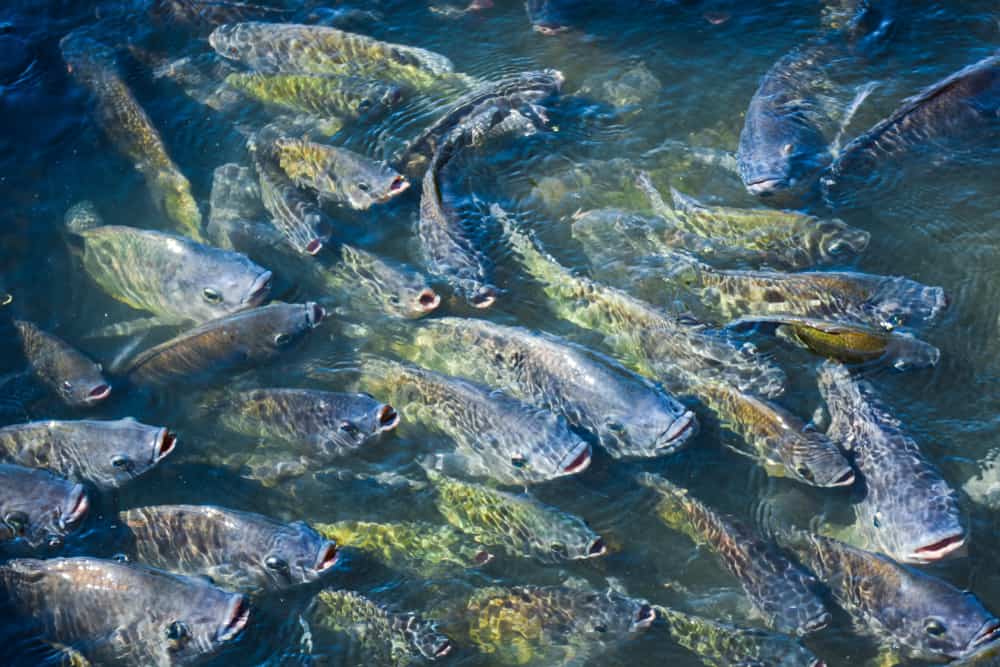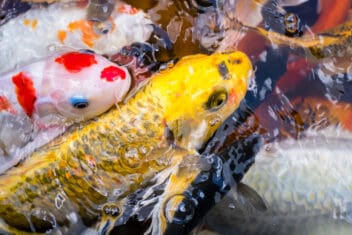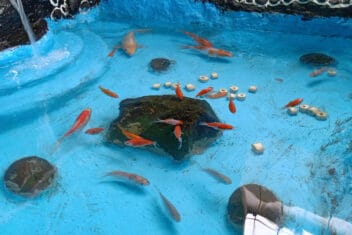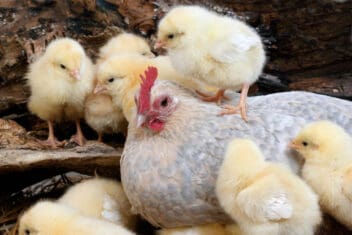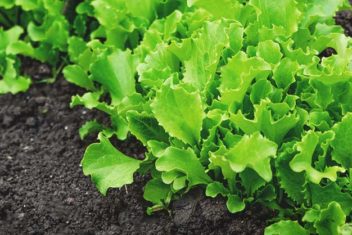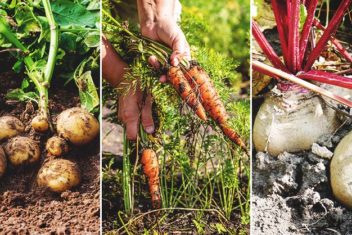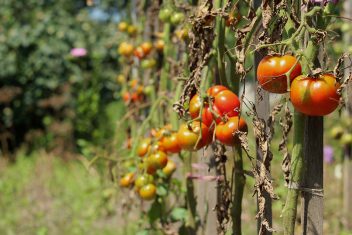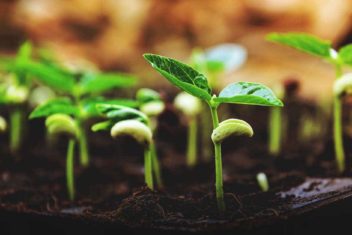Have you ever considered farming fish in your backyard? If not, this article might change your mind. As homesteaders, our goal is to be as self-sufficient as possible. Unlike poultry and livestock—which take up a significant amount of land area—fish are contained in either a pond, swimming-type pool, or another hydroponic system.
In this article, we’ll touch upon different fish farming methods. We’ll also discuss the pros and cons of raising fish in your yard, as well as costs and returns, and potential problems.
What Types of Fish Farming Are There?
Most fish you buy at either the grocery store or pet shop are farmed. That said, it doesn’t mean they were raised in tiny little tanks on shelves in someone’s back room. There are two types of fish farming that may have produced them: either intensive or extensive.
If a company takes part in extensive fish farming, it means that the company that raises the fish uses large ponds to raise them in. These fish live a somewhat natural lifestyle because these ponds have their own ecosystem, and the fish eat from that.
However, intensive fish farming is when the company utilizes smaller tanks to raise the fish. It requires a lot of management (as you might imagine) to produce a lot of fish in such a small space.
Aquaculture fish farms generally come in one of four types: cage, flow-through, recirculating, and greenhouse. Cage is simply a floating cage in which you keep your fish. Flow-through is a system with flowing water like a pond fed by a stream.
Greenhouse combines plants and fish, with the fresh feeding the plants. Recirculating is a closed system with some sort of filter and added aeration in order to increase the number of fish you can keep in the space.
Backyard fish farmers have these two options as well, depending on how much space they have available to them.
What to Raise Your Fish In?
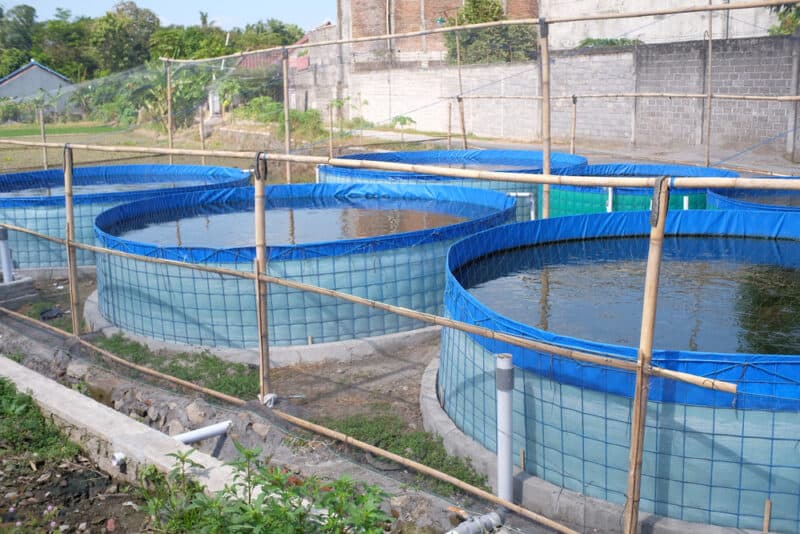
There are really four main ways to raise fish in your backyard. You can raise your fish in a farm pond, backyard koi pond, a swimming pool, or you can go the in-depth route of aquaponics.
Though I won’t go into great detail about aquaponics in this article, this great resource about aquaponics will help you if you decide that you’d like to go that route. That article will help you if you’d like to cultivate both fish and plants symbiotically.
How to Form Your Fish Ecosystem
Whether you farm in a pond, swimming pool, or koi pond, you’ll have to establish a method of feeding your fish. For most people, the easiest and most convenient solution is to feed them pellets or flake food.
Another method—which is more economical— is to create an ecosystem for your fish. This fishy world is self-sustaining, complete with plants, insects, and other small animals. As a result, you won’t have to put much time (or money) towards purchased fish food.
The latter is the far better option but takes a bit of time to establish properly. Here’s how to do it:
1. Dig a Pond
Skip this step if you already have a pond on your homestead. For everyone else, read on.
The reason why we need to use a pond for a self-sustaining fish ecosystem is that it needs to be colonized by species from the natural world around it.
Waterfowl will drop seeds from other ponds, lakes, and rivers into the water so new plants can grow. Similarly, insects that fish like to eat will visit and establish colonies around your pond.
You can dig a pond by hand, of course, but we’re going to suggest hiring someone with a backhoe to dig one out for you. They can also tamp down the soil while they’re at it.
Make sure to put down a thick (at least three-inch) layer of rocks and gravel along the bottom. These will help to keep the soil in place while helping to cultivate beneficial bacteria.
2. Fill the Pond With Water
Grab your hose and fill that hole with water. Fill it up as full as you can, and then let it sit for at least a full week. This will allow any chlorine or other additives to evaporate. Additionally, the silt and mud that have been agitated from the sides and bottom will have time to settle.
At this point, it’s a good idea to plant some water-loving species around the periphery.
Plants are vital for oxygenating the water, as well as providing cover and shade for your fish. The species you’ll choose will depend on your location, of course, as well as the species you’re farming. In general, the ones listed below are great, all-purpose fish pond plants:
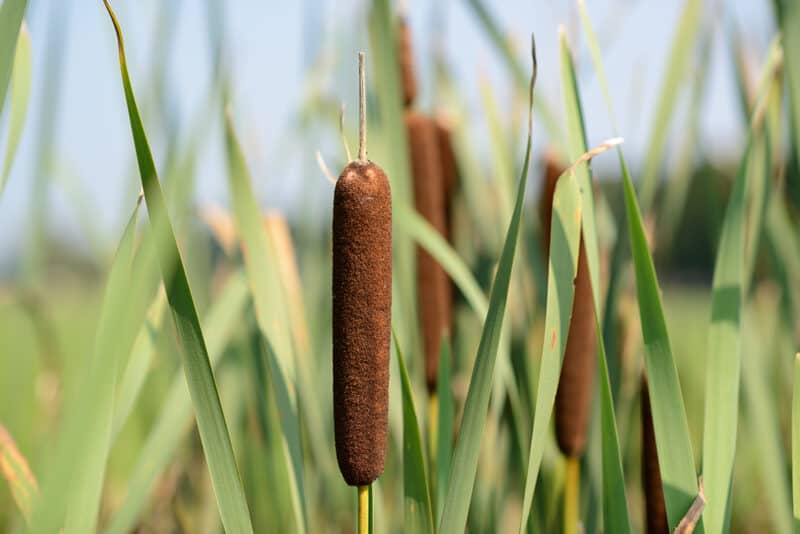
- Hornwort (Ceratophyllum demersum) : ideal for filtering pond water
- Water lilies (Nymphaeaceae spp.): excellent for providing shade and cover—choose a species that’s indigenous to your area
- Water lettuce (Pistia spp.): absorbs waste well, provides decent shade
- Cattails (Typha spp.): some of the best water purifiers out there
- Water hyacinth (Pontederia crassipes): incredible for wastewater treatment
- Duckweed (Lemna spp.): great for both filtering and cover/shade
For more options, check out our guide.
3. Add Fish
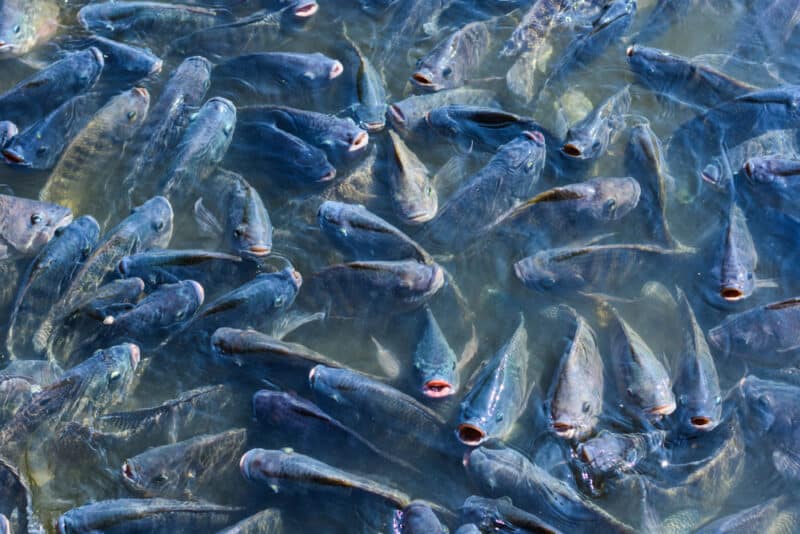
We’ll get into details about the most low-maintenance (and thus easiest) fish to farm in a different guide. As a general rule, however, you can’t go wrong with tilapia or koi, but fish that are lower on the food chain are cheaper to raise.
For instance, catfish only need a pound of food to produce a pound of usable flesh. Carnivorous fish like salmon, on the other hand, need up to five pounds of food to produce a pound of flesh.
Start small with only 10 to 20 fish. This way, you can determine whether their environment is working for them or needs to be amended. If they all die within a week, you’ll know that you still have a lot of work to do on that pond before it’s ready to sustain life.
You’ll have to feed the fish at the beginning since the ecosystem won’t be established yet. Fish generally eat 2-3% of their body weight every day. As a result, it’s best to feed them a couple of times a day, especially if there are many of them clamoring for food at the same time.
Keep in mind that some of your fish will die in there. This might be due to age, illness, injury, or simply because it was their time to go. When they do, leave them in the pond: their decomposing bodies will help to build and sustain that ecosystem.
4. Add Additional Life Into (and Around) Your Pond
If you’ve ever observed a pond, you’ve probably noticed that it was teeming with life. There would have been abundant plants (e.g., those listed earlier), as well as insects and amphibians.
Remember to also plant water-loving species around the perimeter of your pond. These will provide habitat and nourishment for insects, amphibians, and birds—all of which are vital for keeping a pond in ideal condition.
Check out our article on plants for wet soil here, and do additional research regarding the species that thrive best in your area.
These plants should attract beneficial amphibians and insect species to your pond. These may include frogs, newts, salamanders, and small snakes, depending on your region. Animals like these will help to keep insect populations in check and will help to contribute to the health of your pond.
We have relocated frogs and salamanders from nearby wooded areas to our property, and they’ve thrived in the wetlands here.
If you notice a dearth of these species around your own pond, you can always go this route as well. Generally, however, we recommend patience: if and when you build it, they will come when the time is right.
A Note on Floating Fish Cages

It’s up to you whether you decide to let your fish swim freely all around the pond or if you develop a floating cage system. There are pros and cons to both.
A cage system will keep your fish easily contained within floating nets. They’ll still be able to swim around a bit, but it’ll be a lot easier to collect them once they’ve matured. Since they’re confined to a small space, they won’t use up as much energy booting around the pond. This will make them grow more quickly and thus be ready for consumption earlier.
As you can imagine, the downside to this is that it’s not a pleasant experience for the fish. It’s rather like keeping chickens in small, confined cages where they can’t move or fly.
Free-range hens with access to free-roaming insects, and plenty of room to play around, are much happier animals. The same goes for fish: yes, we’re raising them to eat, but that’s no reason to inflict suffering and harm in the process.
Additionally, these cages need to be cleaned on a regular basis. They accumulate filamentous algae, as well as bits and pieces from fish that have died inside them. In an open pond, everything is well-balanced and self-sustaining.
Consider Aquaponics
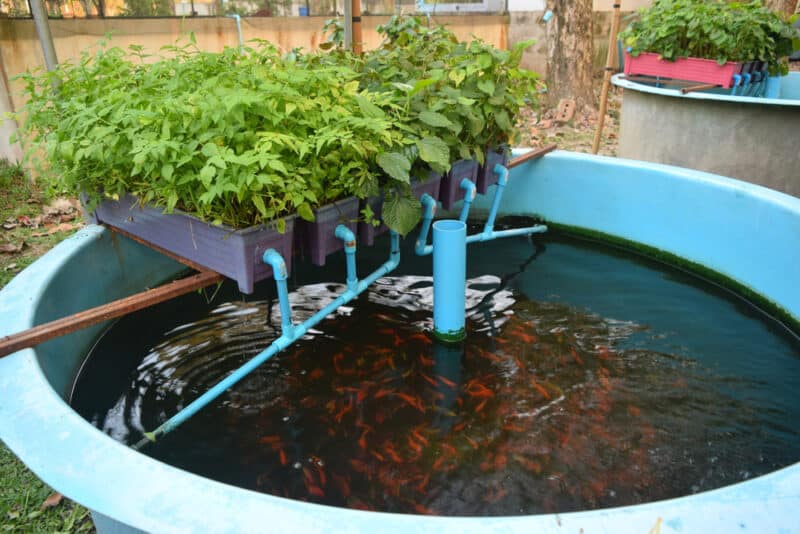
If you’re keen on the idea of raising fish in your backyard but you don’t want a pond, you may want to consider an aquaponics system. This increases productivity on your homestead, as you can cultivate two (or more) food sources in a single area.
In simplest terms, an aquaponics system involves growing plants hydroponically over tanks or pools where you’re raising fish. The plants feed off the nutrients that the fish release (poop), thereby cleaning the water via filtration.
In turn, the fish benefit both from a cleaner environment and from the oxygen that the plants release into their water.
Additionally, depending on the type of plants you’re cultivating, the fish may also be protected from potential predators.
Potential Problems with Backyard Fish Farming
We mentioned fish deaths earlier, as some loss is inevitable. If you’re noticing high numbers of fish dying, however, that’s another situation entirely. Generally, if and when large numbers of fish die off, there’s a good reason for it. More often than not, it has to do with untenable temperatures or algae blooms.
Fish such as trout don’t deal well with hot weather. They thrive in cooler environments and will keel over if temperatures rise too high for them to tolerate. They might be able to survive in a deep pond if there are shady, muddy spots for them to hide in, but not a swimming pool conversion or aquaponics setup.
This is why it’s so important to get fish that are best suited to your zone. If you’re in USDA Growing Zones 7 or above, consider catfish or tilapia rather than trout. In contrast, trout and koi are better for colder zones.
If a large number of fish dies all at once and the temperature hasn’t gone haywire, test the water.
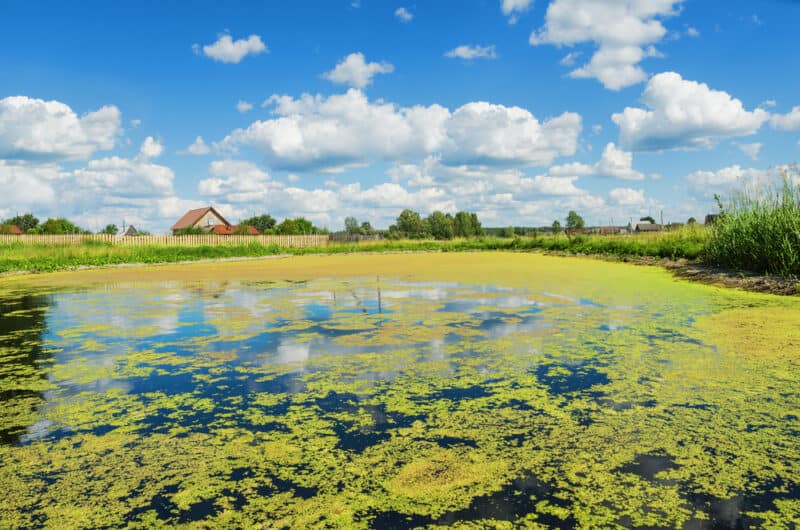
You might be dealing with a sudden algae explosion, or something else may have happened to alter the pH or salinity. In fact, be sure to check the water on a regular basis. By doing so, you may be able to catch issues like this before they become a big deal.
Inspect Your Fish
Finally, inspect all the fish you harvest to check for bacterial infections. These are more common in converted pools and aquaponics tanks and can quickly spread to all the fish housed inside them.
Check their eyes, gills, vents, and scales for discoloration or ulcers. The most common symptom is hemorrhagic spotting (e.g., red, bruise-like spots on their bodies).
If you observe these issues on your fish, consult an aquatic veterinarian or ichthyology specialist to determine what kind of infection you’re dealing with. More often than not, your fish can be treated with an antibiotic such as Fishmox.
Learn More
If you’d like to know about the best species of fish to use in backyard farming, check out our guide. We also have a guide to help you convert a pond or swimming pool into a structure for farming fish.
Be sure to do a lot of research before deciding whether to start backyard fish farming or not. In fact, see if you can consult with a local fish farmer. They should be able to tell you about their setbacks and successes, thus helping you to avoid mistakes they made in their own endeavors.
Fish farming is a great way to ensure food security or to add a bit of extra income to your family’s earnings. If you decide to go this route, best of luck to you!
How Do I Use The Fish I Raise?
You like the idea of raising your own fish and can handle building your own water area for them. You’ve got it figured out how you will feed them.
You might plan on selling some of the fish you raise, but how do you use the rest?
If you are unfamiliar with cooking fish, here are a few recipes to give you ideas for cooking them. Also, here is a resource to help you learn how to harvest and clean them.
1. Parmesan Crusted Tilapia
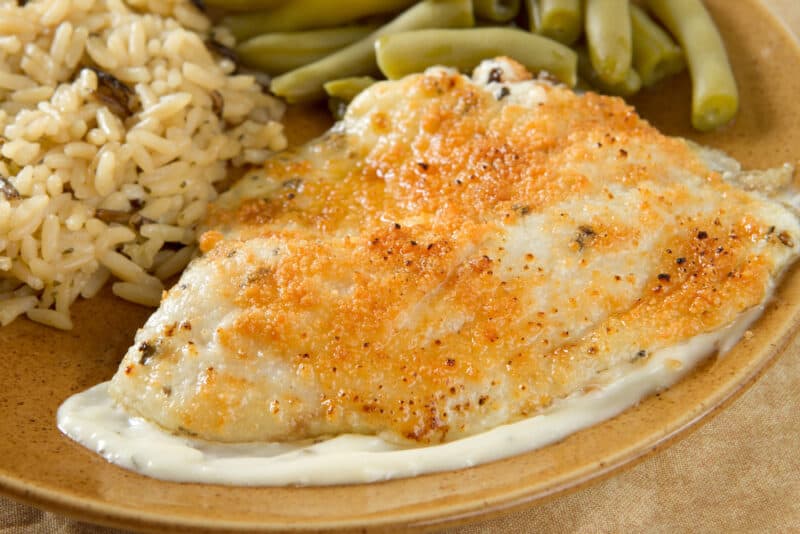
This recipe looks delicious! It requires only a few basic ingredients and it can be tossed in the oven for a quick and healthy meal.
If you are thinking about raising your own Tilapia, then keep this recipe close by. It might become your new favorite dish (and very inexpensive to make if you raise your own fish.)
Try This Recipe2. Honey Pecan Trout
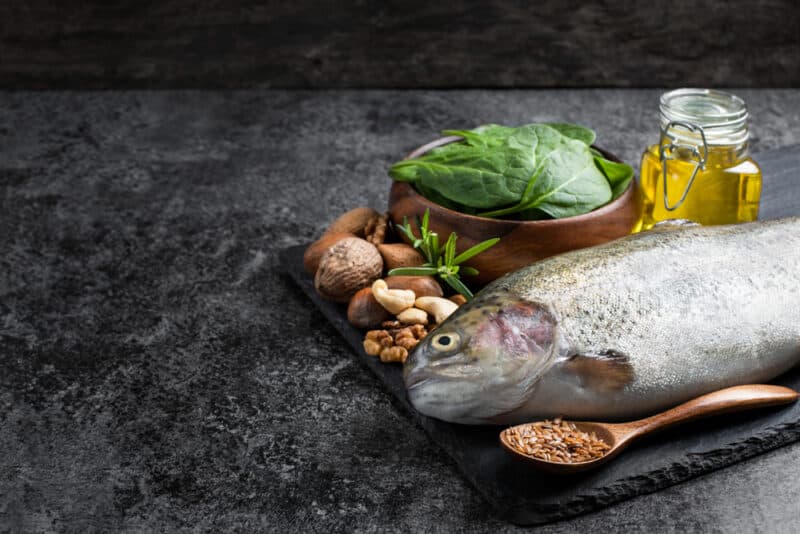
This trout recipe looks amazing. Though it requires a few ingredients, if you like fried food then you might want to try it.
And if you raise trout, then this recipe might just become your go-to on how to utilize the fish that you’ve raised.
Try This Recipe3. Koi Fish Tacos
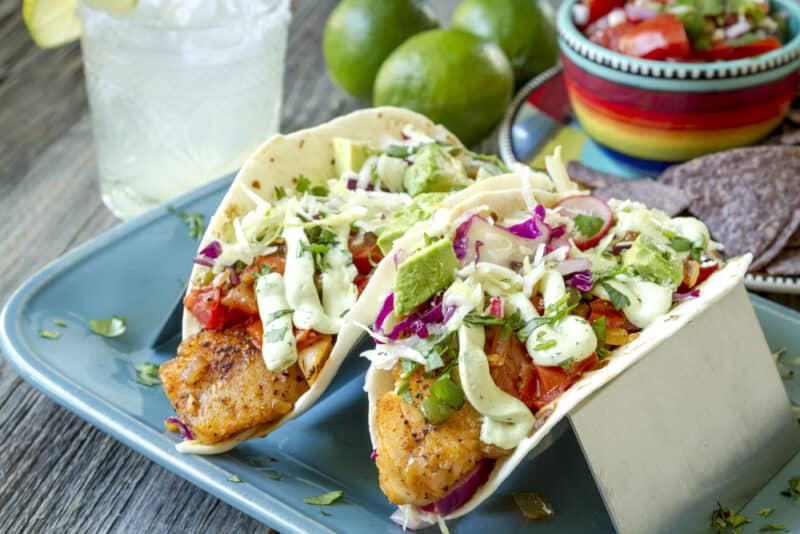
Do you like fish tacos? Give this recipe a try. It contains lots of basic ingredients and is also meant to be served with a delicious Pico de Gallo.
If you are a fan of mixing your seafood with Mexican cuisine, then raise your own Koi fish so you can make this yummy-sounding recipe on the cheap.
Try This Recipe